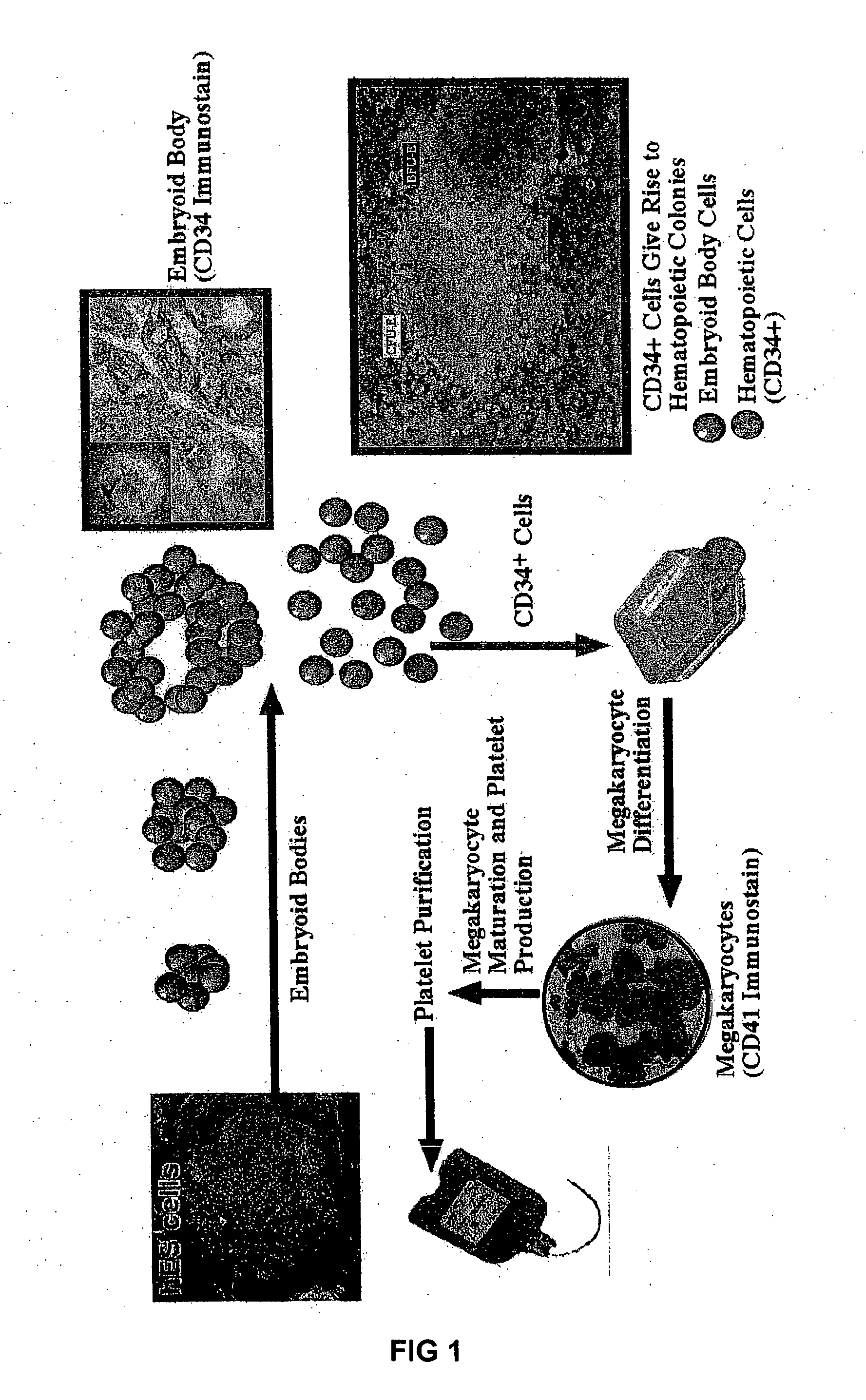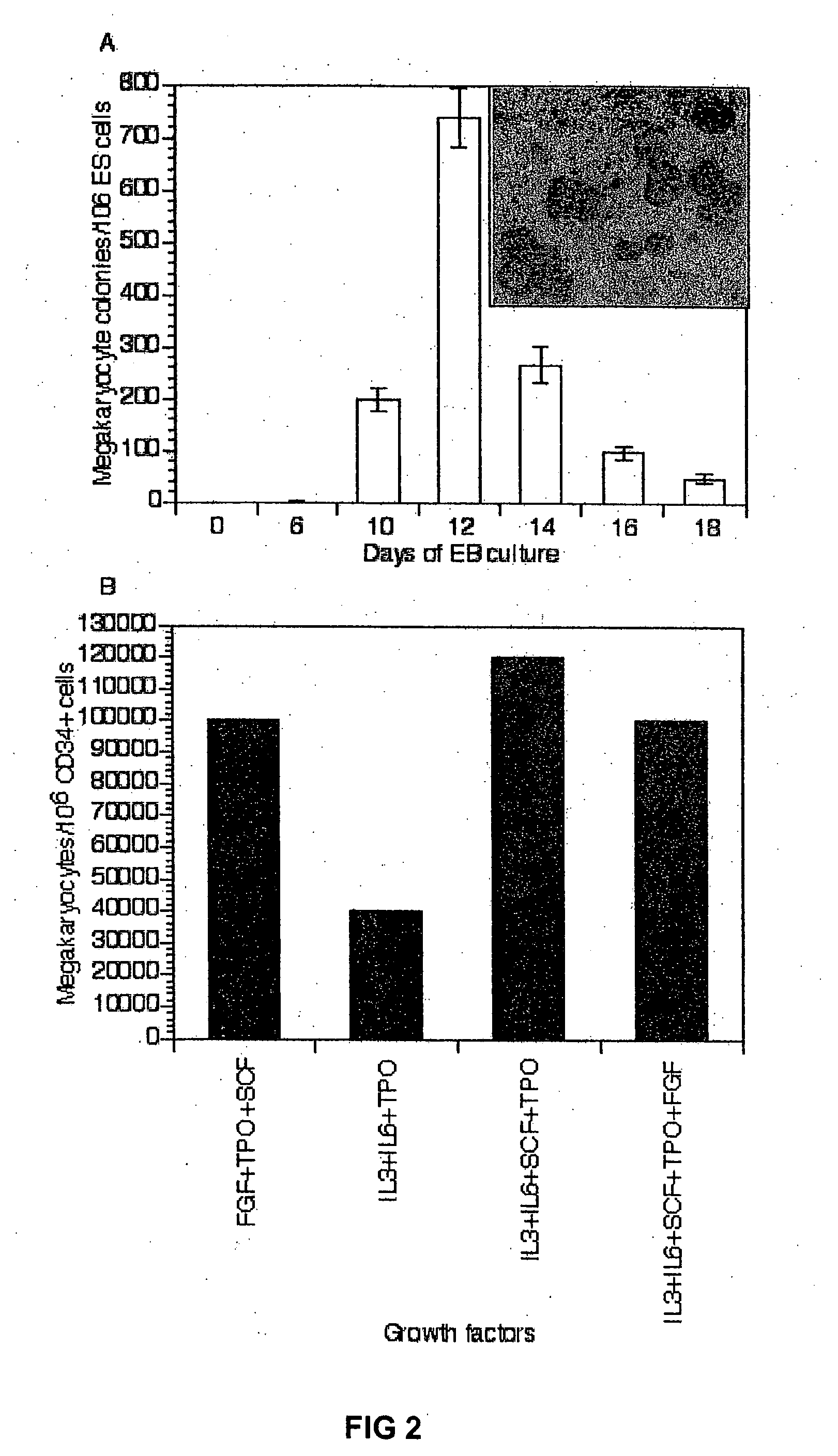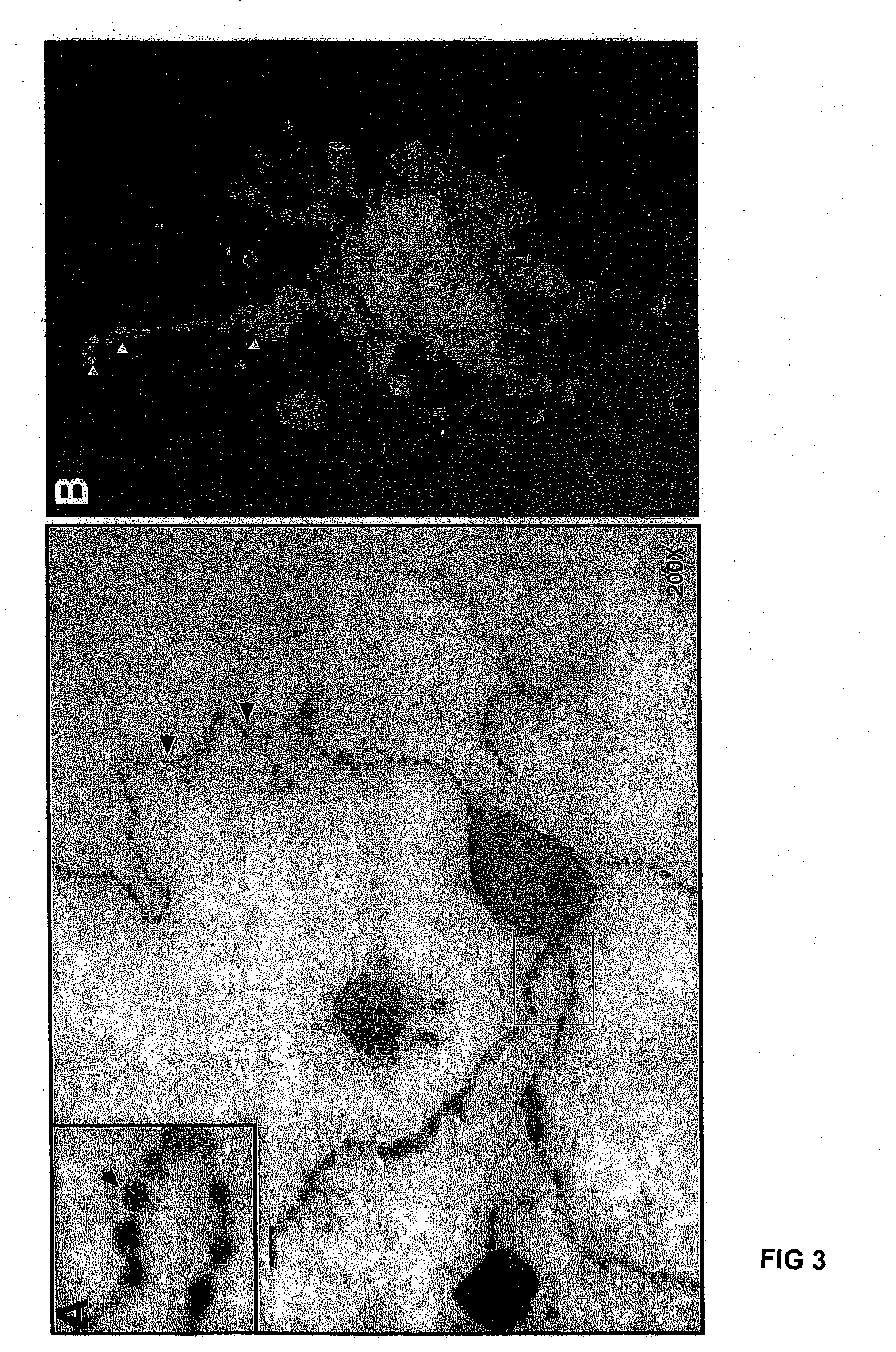Platelets from stem cells
a stem cell and platelet technology, applied in the field of platelets from stem cells, can solve the problems of recurring shortages of platelets on the battlefield and in civilian healthcare systems, no clinically applicable method for the long-term storage of platelets, and low platelet density
- Summary
- Abstract
- Description
- Claims
- Application Information
AI Technical Summary
Benefits of technology
Problems solved by technology
Method used
Image
Examples
examples
Hematopoietic Precursors from Embryoid Bodies
[0025] Embryoid body (EB) formation is a method that has been used to study both hematopoietic differentiation of mouse and human ES cells. However, unlike mouse ES cells, human ES cells in a single cell suspension fail to efficiently form embryoid bodies. Instead, to form embryoid bodies from human ES cells, intact colonies of human ES cells cultured on mouse embryonic fibroblasts (MEFs) were digested for 5 min by 0.5 mg / ml dispase to form small cell clusters. These cell clusters were then allowed to further aggregate in serum-containing stem cell cultivation medium (20%FCS). Easily distinguishable cell masses, embryoid bodies start to form after 6 days of culture with 50% single cells that fail to participate into the cell mass and undergo apoptosis. After 12 days of culture, the embryoid bodies resembled the early embryonic structure of the yolk sac. Taking sections of the embryoid bodies and then subsequent immuno-labeling the sectio...
PUM
| Property | Measurement | Unit |
|---|---|---|
| pH | aaaaa | aaaaa |
| pH | aaaaa | aaaaa |
| fragile | aaaaa | aaaaa |
Abstract
Description
Claims
Application Information
 Login to View More
Login to View More - R&D
- Intellectual Property
- Life Sciences
- Materials
- Tech Scout
- Unparalleled Data Quality
- Higher Quality Content
- 60% Fewer Hallucinations
Browse by: Latest US Patents, China's latest patents, Technical Efficacy Thesaurus, Application Domain, Technology Topic, Popular Technical Reports.
© 2025 PatSnap. All rights reserved.Legal|Privacy policy|Modern Slavery Act Transparency Statement|Sitemap|About US| Contact US: help@patsnap.com



